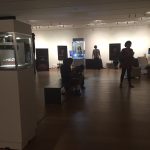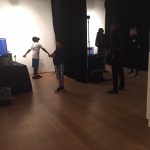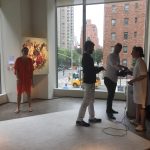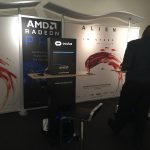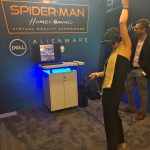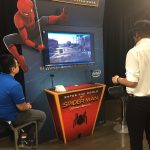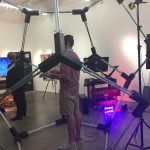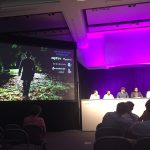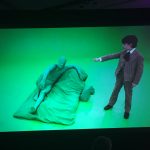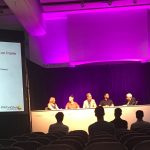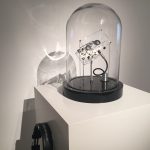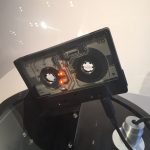On June 23rd, I attended The Art of VR event, held at Sotheby’s. It was billed as “A 2 day curated VR exhibition featuring: Studio premieres, theatrical & brand case studies, studio exhibitions, hands-on demonstrations.” I signed up through Eventbrite.
Virtual reality has certainly advanced from Second Life. Now there are headsets and immersive devices. The tickets were somewhat expensive but I went to the event, anyway, because I didn’t have that much experience with virtual reality; I thought it would be a good way to jump in. I spent time trying out VR at the different booths, then spent time listening to the talks, which were pretty good.
VR Booths and Hands-On Demonstrations
Many works were commercial, intended to demonstrate the graphics capabilities of a type of computer, to promote a film, or for some other commercial purpose. In my opinion, VR for entertainment purposes automatically comes across as a bit insincere, unless the provenance of the work — where it comes from, how it was produced, who produced it and why — is known because it can help the audience get over their skepticism.
Photos from the Galleries
There were also a number of artworks, and so far I think it works best for art experiences. The mechanics of the experience are incredibly intimate, yet it remains very public – which describes how art is experienced, as well. But, trying VR can be an intimidating activity. You have to get over feeling embarrassed for looking stupid with these giant geeky goggles on your face while other people are watching. And, as a panelist later mentioned, VR can be clunky and clumsy, even in an artistic setting.
Despite my initial embarrassment, I participated as much as I could. I enjoyed the experience and learning about VR.
Discussion Panels
I’ll admit that I initially wasn’t compelled to visit the floor where the discussion panels were being held. But once, I did I was very impressed. The president of the VR Society led at least 2 panels I listened to; he’s a very good moderator. The two discussions that impressed me most were a discussion on medical uses of VR and a discussion about a cinematic experience, called “Lincoln in the Bardo”.
Photos from the panel discussions
Discussion: Medical Uses of VR
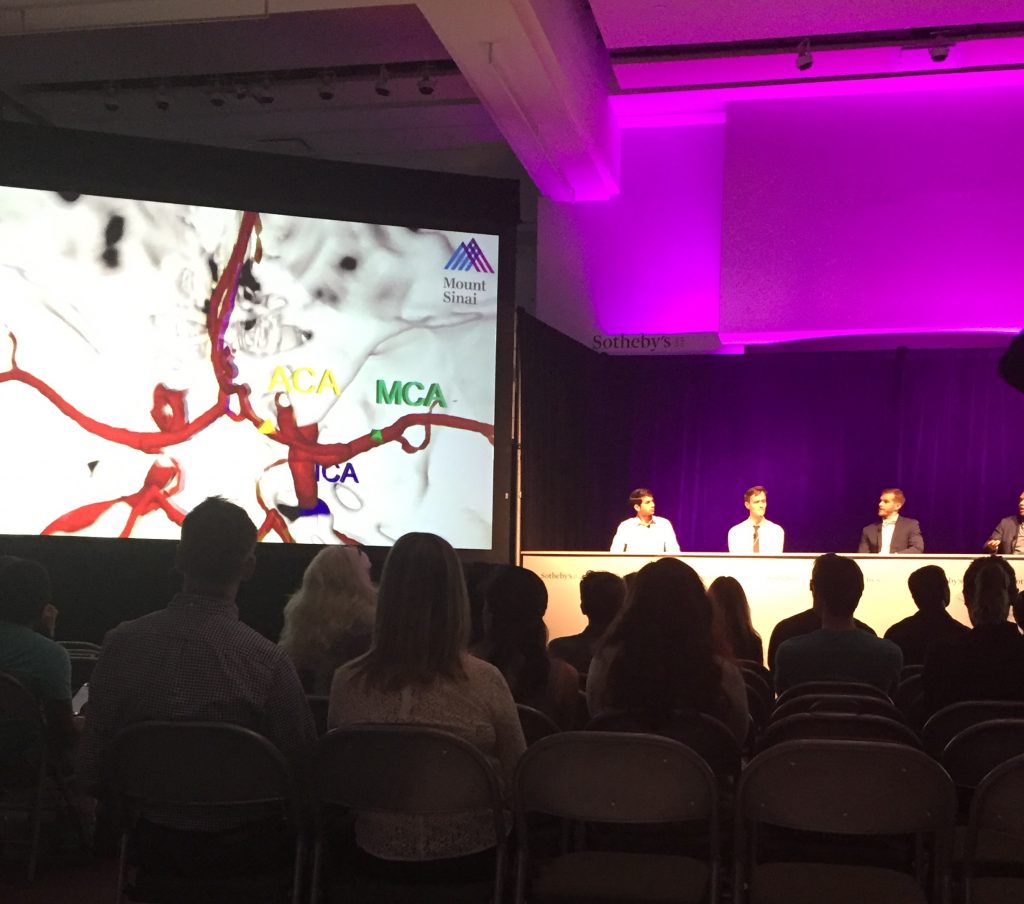
One of the discussion panels was about medical uses of VR. Overall, this was the most impressive topic discussed or demonstrated for me.
- Surgery: First, a neurosurgeon described how he used virtual reality to help him remove difficult tumors in the middle of a patient’s head. He showed how, due to the tumor’s location, historically the surgery left people disfigured and possibly blind or deaf. (The images were not attractive.) With VR, he showed, he’s able to more accurately and precisely navigate around major arteries and nerves, to minimize the intrusiveness of the surgery using orthoscopic surgical tools to minimize long-term damage and scarring.
- Mental Health: Next, a psychiatrist described how he used VR to simulate settings for PTSD patients, to help them overcome their disorder in a controlled setting. For example, he can simulate Iraq for war veterans. He also showed how VR can be used to help patients manage pain, specifically burn patients. Pain, he explained, requires attention. If you can distract patients from their pain, they will experience pain relief. His example was showing a burn patient experiencing an ice world.
- Medical Education: Finally, a medical artist showed how he used VR drawing tools to augment his work. I don’t entirely remember everything about his discussion, but his work sounded very interesting. And it seems like a type of art that is completely overlooked.
Anyway, the medical talk was very innovative and I’m glad to see this new technology being used in such important ways.
Discussion: Lincoln In the Bardo
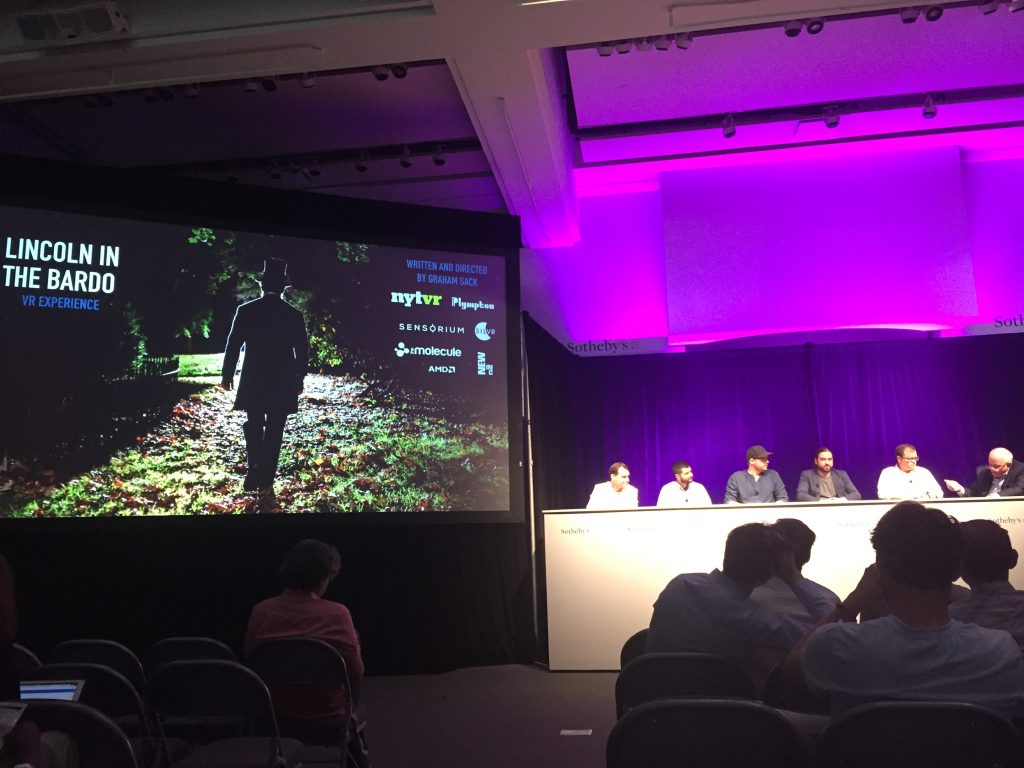
Lincoln in the Bardo
In this immersive narrative short, President Lincoln pays a nighttime visit to the haunted cemetery in which his beloved son has just been laid to rest. Based on “Lincoln in the Bardo,” the new novel by George Saunders.
Sotheby’s Art Gallery: BUNKER
Somewhat related to the VR event, Sotheby’s also had a pop-up gallery, called BUNKER, “which since 2014 has featured artists who collaborate with technology to create code-driven sculpture, augmented reality and virtual installation”. I took some time to check it out. There weren’t that many projects, but here are few projects I especially liked.
One that was really clever used the cassette frames and an audio output. Since it was using headphones, a video would have only caught half of it. So, I didn’t capture it at all.
The installation will be at Sotheby’s until July 20, 2017.

